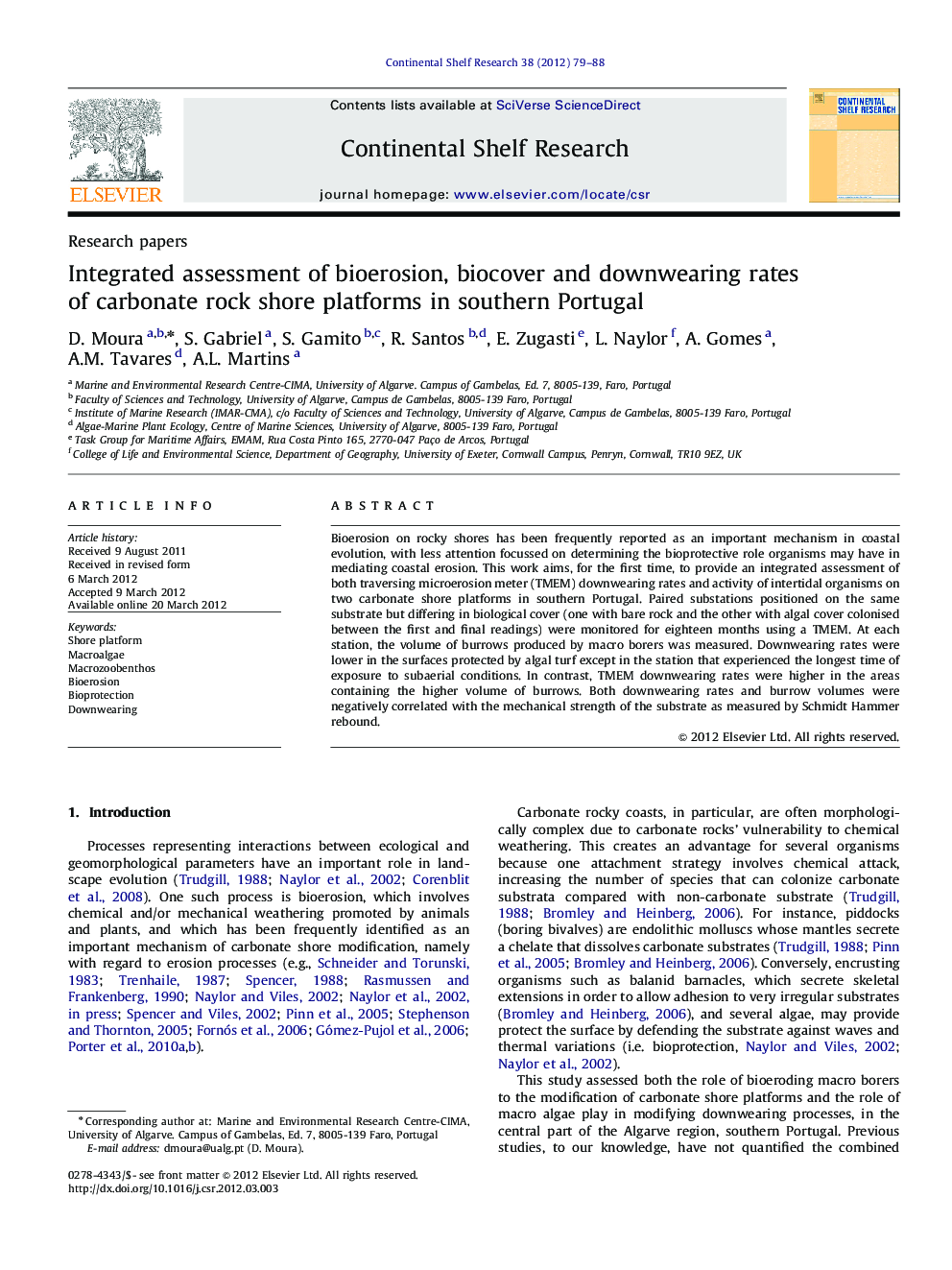| Article ID | Journal | Published Year | Pages | File Type |
|---|---|---|---|---|
| 4532445 | Continental Shelf Research | 2012 | 10 Pages |
Bioerosion on rocky shores has been frequently reported as an important mechanism in coastal evolution, with less attention focussed on determining the bioprotective role organisms may have in mediating coastal erosion. This work aims, for the first time, to provide an integrated assessment of both traversing microerosion meter (TMEM) downwearing rates and activity of intertidal organisms on two carbonate shore platforms in southern Portugal. Paired substations positioned on the same substrate but differing in biological cover (one with bare rock and the other with algal cover colonised between the first and final readings) were monitored for eighteen months using a TMEM. At each station, the volume of burrows produced by macro borers was measured. Downwearing rates were lower in the surfaces protected by algal turf except in the station that experienced the longest time of exposure to subaerial conditions. In contrast, TMEM downwearing rates were higher in the areas containing the higher volume of burrows. Both downwearing rates and burrow volumes were negatively correlated with the mechanical strength of the substrate as measured by Schmidt Hammer rebound.
► This study was performed on carbonate shore platforms. ► We combine for the first time TMEM and macro-boring erosion on shore platforms. ► Downwearing correlates positively to volume of piddock burrows. ► Downwearing correlates negatively to biocover.
